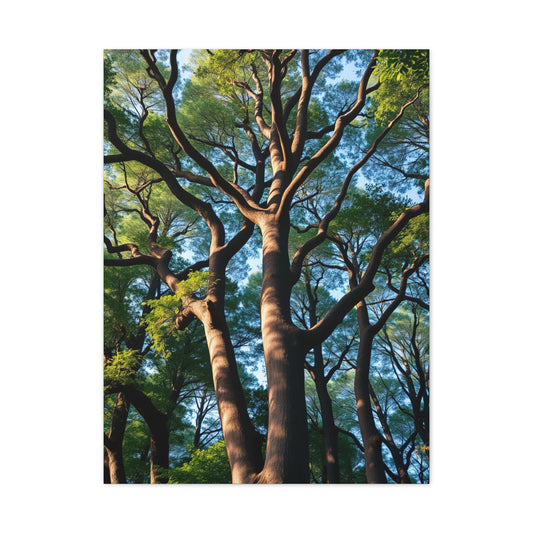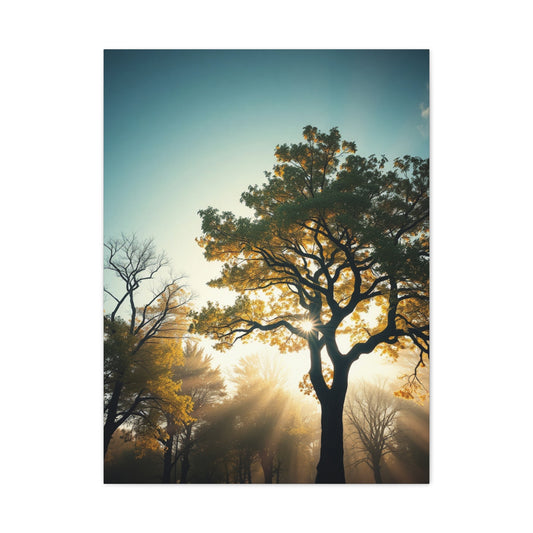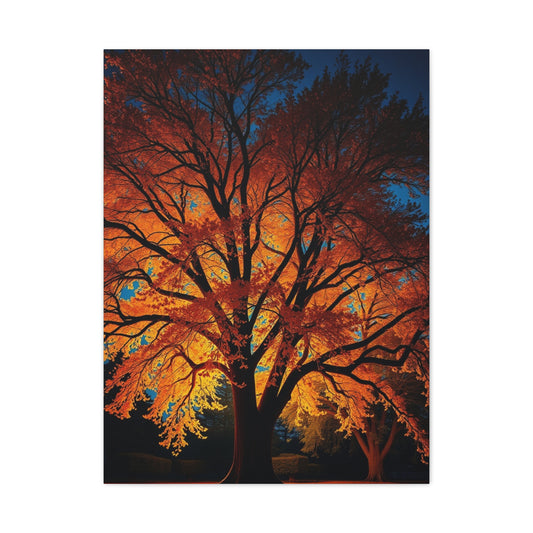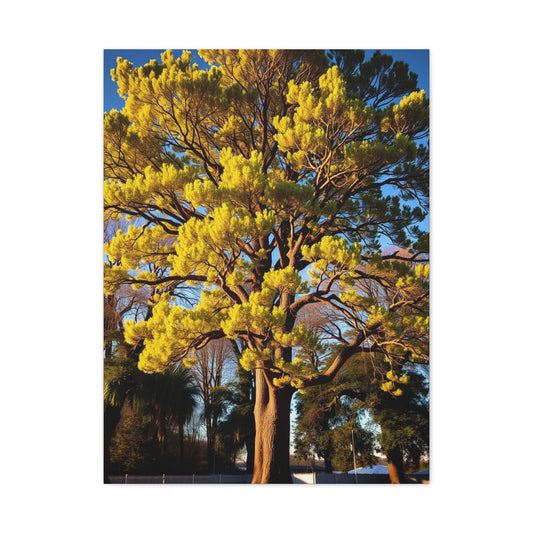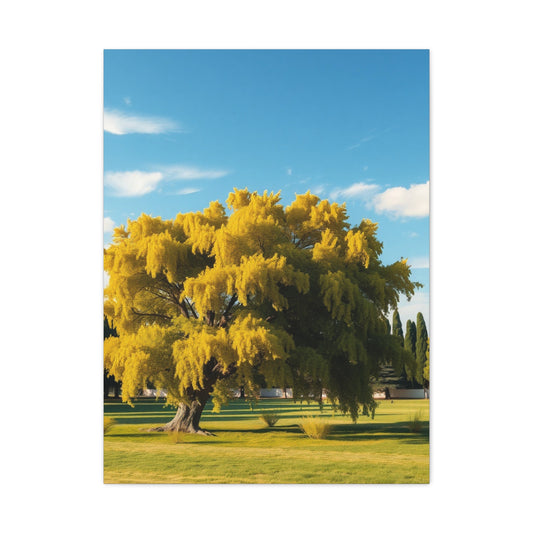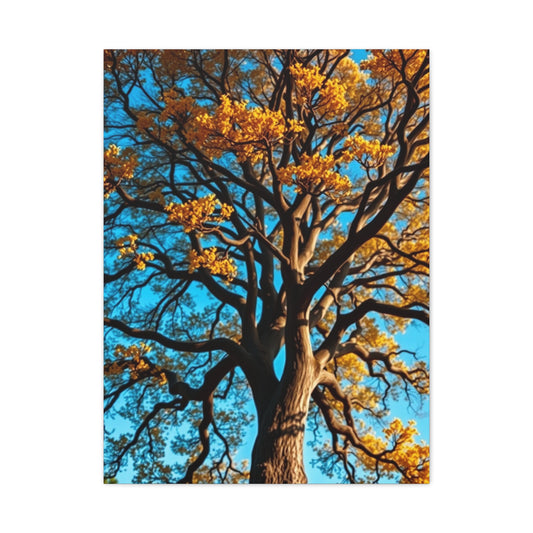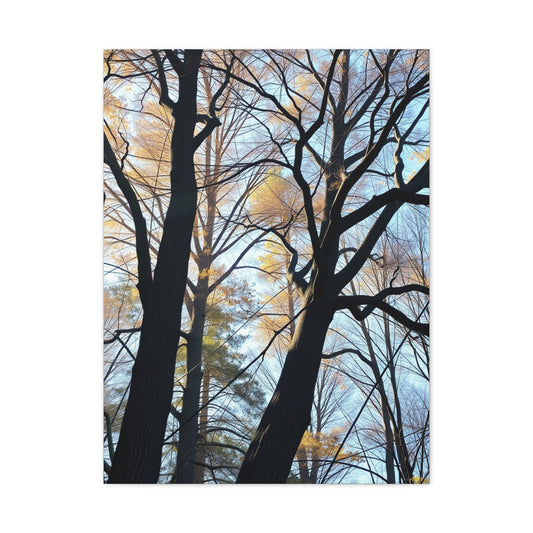Nature-Inspired Tree Wall Art for Stylish Interiors
Tree wall art is a transformative element in interior design that bridges the natural world with our indoor spaces. Unlike fleeting design trends, tree-inspired artwork carries a timeless appeal, evoking a sense of serenity, balance, and connection to nature. It is an art form that can infuse both residential and professional spaces with aesthetic charm, emotional depth, and psychological benefits. The allure of tree wall art lies not only in its visual beauty but also in its symbolic resonance, which spans cultures and epochs. By incorporating this form of art into your environment, you invite a sense of tranquility, creativity, and contemplation into your everyday life.
The Psychological Impact of Tree Imagery
Humans have an inherent affinity for nature, often described as biophilia, which explains why natural elements in interior design can have profound psychological benefits. Tree wall art provides a visual connection to the outdoors, even in urban or enclosed environments. Exposure to tree imagery has been linked to reduced stress, improved mood, and enhanced cognitive performance. In particular, images of trees with expansive canopies or lush foliage can evoke feelings of shelter and security, while depictions of solitary trees can inspire reflection and mindfulness. This subtle yet powerful influence makes tree wall art an effective tool for creating spaces that promote mental well-being and emotional balance.
The Symbolism of Trees in Art
Trees have been central to human symbolism for millennia. They represent growth, resilience, and continuity, connecting the earth to the sky and the present to the past. In many cultures, trees are revered as sacred entities, embodying wisdom, life, and renewal. The oak tree, for instance, has long symbolized strength and endurance, while the cherry blossom is celebrated for the transient beauty of life. By selecting tree wall art that resonates with these meanings, individuals can imbue their living or working spaces with a deeper sense of purpose and reflection. The symbolic dimension of tree art transforms it from mere decoration into an expression of identity, values, and philosophical perspective.
Varieties of Tree Wall Art
Tree wall art encompasses a vast array of styles, mediums, and visual interpretations. It can range from realistic depictions of forests and individual trees to abstract interpretations that emphasize form, color, and texture. Traditional mediums include oil and acrylic paintings, watercolor illustrations, and charcoal or ink sketches. Contemporary interpretations often employ mixed media, digital art, and even sculptural elements that create a three-dimensional effect. The choice of style and medium allows for seamless integration into different interior aesthetics, whether minimalist, rustic, modern, or eclectic. Understanding the diversity of tree wall art options is crucial for making an informed selection that complements your space and design intentions.
Integrating Tree Art with Interior Design
The placement and integration of tree wall art play a pivotal role in its impact on the overall design of a room. Art should be considered as part of a broader spatial composition, taking into account the dimensions of the wall, surrounding furniture, and ambient lighting. Large-scale tree murals or canvases can serve as the focal point of a living room or office, drawing attention and providing a sense of depth and scale. Smaller artworks can be grouped in gallery-style arrangements, creating visual interest without overwhelming the space. Consideration of complementary elements, such as textiles, colors, and textures, further enhances the cohesiveness and harmony of the room. Successful integration transforms tree wall art into a unifying design feature rather than a standalone decoration.
Enhancing Natural Light and Ambience
Lighting is a critical factor in maximizing the visual and emotional impact of tree wall art. Natural light enhances the colors, textures, and subtleties of the artwork, bringing the depiction of trees to life. Strategic use of artificial lighting, such as spotlights or accent lights, can create dramatic effects and highlight specific elements of the artwork. Consideration of the interplay between light and shadow can deepen the sense of dimension, making the tree imagery appear more immersive and lifelike. By thoughtfully pairing tree wall art with optimal lighting conditions, you can amplify the sense of calm and natural beauty within a space.
Thematic Approaches to Tree Art
A thematic approach to tree wall art allows for intentional storytelling and design coherence within a room. Themes can be based on seasons, specific tree species, or symbolic associations. For example, a series of autumn-inspired tree prints can evoke warmth and nostalgia, while tropical palm trees may create an exotic, relaxed atmosphere. Thematic selection can guide choices in complementary decor elements, such as rugs, cushions, and furniture, ensuring that the tree art is harmoniously integrated. This approach transforms the wall into a curated visual narrative, allowing the natural elegance and symbolism of trees to define the emotional tone of the space.
Tree Wall Art in Professional Spaces
Beyond residential interiors, tree wall art has gained popularity in professional environments such as offices, healthcare facilities, and hospitality venues. In these contexts, tree imagery contributes to stress reduction, enhanced focus, and a welcoming atmosphere for clients, patients, and employees. In healthcare settings, for instance, depictions of serene forests or blossoming trees have been linked to improved patient recovery rates and overall well-being. In corporate offices, tree wall art can create calming zones that balance the intensity of workspaces, encouraging creativity and collaboration. The universal appeal of trees ensures that this art form resonates across different audiences and professional purposes.
The Role of Texture and Material
The material and texture of tree wall art play a significant role in its tactile and visual appeal. Artists and designers often experiment with wood, metal, fabric, and mixed media to create pieces that offer both aesthetic and textural interest. Textured surfaces, such as carved wooden trees or raised metal silhouettes, add depth and dimension to walls, creating an engaging visual experience. In addition, the use of natural materials can enhance the organic feel of the artwork, reinforcing its connection to nature. Selecting materials thoughtfully ensures that tree wall art not only complements the visual design of a space but also contributes to a multisensory experience.
Choosing the Perfect Tree Wall Art for Your Space
Selecting the ideal tree wall art requires a thoughtful approach that balances aesthetic preference, spatial considerations, and emotional resonance. Every room has its own atmosphere, scale, and function, and the tree art chosen should harmonize with these factors. Before making a purchase, consider the size, style, medium, and symbolic meaning of the artwork. A careful selection process ensures that the piece not only enhances visual appeal but also contributes positively to the ambiance of the space.
Assessing Wall Space and Dimensions
The dimensions of the wall and room play a crucial role in determining the appropriate size of the tree wall art. Large-scale pieces are ideal for expansive walls, where they can act as a focal point and create a sense of grandeur. Conversely, smaller artworks are better suited for intimate spaces or as part of a curated gallery wall. Measuring the wall space before purchasing ensures that the artwork fits proportionately and avoids overwhelming or underwhelming the room. Additionally, consider the height at which the art will be displayed. Eye-level placement is generally recommended to allow for comfortable viewing and maximum visual impact.
Matching Art to Interior Design Styles
Tree wall art should complement the existing decor style rather than clash with it. In minimalist spaces, simple black-and-white tree illustrations or sleek metal silhouettes work well to maintain a clean and uncluttered look. Traditional interiors benefit from detailed oil or watercolor paintings of trees, forests, or landscapes that echo classic design elements. Rustic and farmhouse spaces can incorporate wood or metal tree sculptures that emphasize natural textures. For eclectic or bohemian interiors, colorful and abstract tree art can inject vibrancy and personality. Considering the overall decor style ensures that the tree art feels integrated and cohesive rather than disconnected.
Selecting the Right Medium
The medium of tree wall art affects its texture, durability, and visual impact. Traditional media such as oil, acrylic, and watercolor offer depth and richness in color, creating a tactile and immersive experience. Photography captures the intricate details and realism of trees, evoking a sense of immediacy and natural beauty. Mixed media and three-dimensional installations introduce textural elements that engage multiple senses and create dynamic visual interest. The choice of medium should align with the room's atmosphere and functional requirements, as well as your personal aesthetic preference.
Considering Symbolism and Personal Meaning
Tree wall art carries symbolic significance that can enhance the emotional and philosophical atmosphere of a space. Trees are often associated with life, growth, stability, and resilience. Different tree species convey distinct meanings; for example, the oak tree represents strength, the cherry blossom symbolizes impermanence, and the willow embodies flexibility and introspection. Selecting artwork that resonates with personal values or aspirations can create a more meaningful and emotionally satisfying environment. The symbolic layer adds depth to the visual experience and allows the art to become a reflective and inspirational element within the room.
Styling Tree Wall Art in Residential Spaces
Residential spaces offer a versatile canvas for tree wall art, and thoughtful styling can transform walls into expressive features. The art can be used to establish a theme, highlight a particular corner, or harmonize with furnishings and textiles. Understanding how to incorporate tree wall art in various rooms enhances both aesthetics and functionality.
Living Room Arrangements
In the living room, three wall art often serve as the focal point, drawing attention and anchoring the decor. A large canvas or framed painting placed above a sofa or fireplace can create a sense of balance and sophistication. Complementary furnishings, such as wooden coffee tables or nature-inspired textiles, can echo the organic theme of the artwork. Layering smaller pieces around the central artwork or combining tree art with mirrors and shelves adds dimension and visual intrigue. In rooms with ample natural light, positioning the art to take advantage of sunlight enhances color vibrancy and texture, making the imagery more lifelike and immersive.
Bedroom Styling
Tree wall art in the bedroom can promote relaxation and serenity, contributing to a calming atmosphere. Soft, muted tones, such as pastel greens and browns, evoke tranquility and create a peaceful retreat. Artwork depicting solitary trees, forest pathways, or gentle landscapes encourages introspection and restful reflection. Placement above the bed or on a wall opposite a window can maximize both visibility and the soothing effect. Combining tree art with complementary bedding, curtains, and rugs strengthens the cohesive aesthetic and reinforces a sense of harmony within the space.
Kitchen and Dining Spaces
Although less common, tree wall art can be effectively incorporated into kitchens and dining areas to introduce natural elements and visual interest. Small prints or framed sketches of fruit-bearing trees, herbs, or botanical illustrations work well in compact spaces, providing subtle decorative accents without overcrowding. In larger dining areas, panoramic forest landscapes or abstract tree paintings can add depth and warmth, enhancing the overall dining experience. Coordinating the colors and textures of the artwork with cabinetry, table settings, and kitchen accessories ensures a balanced and unified appearance.
Hallways and Transitional Areas
Hallways, entryways, and stairwells often lack focal points, making them ideal locations for tree wall art. Vertical compositions or elongated panels can emphasize height and guide the flow of movement through these spaces. A series of small, coordinated pieces along a corridor can create visual continuity, transforming a transitional area into an engaging gallery. Using reflective surfaces or accent lighting alongside tree art in these spaces can further enhance the impact, creating an inviting and dynamic atmosphere for visitors and residents alike.
Styling Tree Wall Art in Professional Environments
Tree wall art is increasingly recognized for its positive impact in professional settings, from offices and corporate spaces to healthcare facilities and hospitality venues. Beyond aesthetics, it contributes to mood, productivity, and overall well-being.
Offices and Workspaces
In office environments, tree wall art can mitigate stress, stimulate creativity, and promote focus. Large-scale forest imagery or abstract tree art in communal areas encourages relaxation and fosters a sense of calm. In individual workspaces, smaller, carefully selected pieces can provide a mental break and serve as sources of inspiration. Placement should consider sightlines, ensuring that employees can view the artwork comfortably from their desks or common areas. Coordinating colors and textures with office furniture and flooring strengthens visual coherence, making tree art an integral part of the workspace design rather than a decorative afterthought.
Healthcare and Wellness Spaces
Healthcare facilities benefit greatly from the presence of tree imagery, as studies indicate that exposure to natural visuals can reduce anxiety and enhance recovery. Waiting rooms, treatment areas, and corridors can feature serene landscapes, blossoming trees, or calming abstract interpretations to create a restorative environment. In wellness centers, spas, and therapy rooms, tree art reinforces the connection to nature, complementing holistic approaches to health and relaxation. The selection of soft colors, gentle forms, and soothing compositions maximizes the therapeutic benefits of the artwork.
Hospitality and Public Spaces
In hotels, restaurants, and public venues, tree wall art enhances ambiance, engages visitors, and communicates a sense of style. Large-scale murals or sculptural installations create striking first impressions in lobbies and reception areas. Dining areas, lounges, and corridors benefit from tree art that balances visual interest with subtlety, enhancing comfort without overpowering the space. Integration with lighting, furniture, and other design elements ensures that the tree wall art contributes to a cohesive and inviting atmosphere that resonates with guests and patrons.
Arranging Tree Wall Art for Maximum Impact
The arrangement of tree wall art is crucial to achieving visual harmony and emotional resonance. Careful consideration of composition, scale, and relationships with surrounding elements enhances the overall effectiveness of the artwork.
Creating Focal Points
A well-chosen tree artwork can serve as the centerpiece of a room, drawing attention and establishing a sense of balance. Placement at eye level, combined with appropriate lighting, maximizes visibility and impact. Large-scale pieces work particularly well as focal points, creating a sense of grandeur and presence. Complementary decor elements, such as furniture and accessories, should support the prominence of the artwork rather than compete with it, ensuring a cohesive and intentional design.
Layering and Grouping
Layering tree wall art with other decorative elements adds depth and complexity to a space. Consider grouping multiple pieces to form a gallery wall or layering artwork with mirrors, shelves, or wall-mounted sculptures. This approach allows for the exploration of visual narratives and thematic cohesion, creating dynamic compositions that engage viewers. Experimenting with spacing, alignment, and orientation ensures that the arrangement feels intentional and visually balanced.
Complementary Colors and Textures
Color and texture play a central role in harmonizing tree wall art with the surrounding environment. Repeating hues from the artwork in furnishings, textiles, and accessories creates visual continuity and a sense of cohesion. Similarly, echoing textures, such as wood, metal, or fabric elements present in the art, reinforce the organic and tactile qualities of the piece. Thoughtful integration of colors and textures enhances the overall aesthetic and ensures that the tree art contributes meaningfully to the room’s design language.
Considering Perspective and Depth
The visual impact of tree wall art can be enhanced by considering perspective and depth. Art that depicts trees in layers, such as forests or wooded pathways, can create an illusion of expanded space and dimensionality. Placing such artworks strategically, such as opposite a window or near reflective surfaces, can amplify the perception of depth, making the room feel larger and more immersive. Understanding perspective allows designers to leverage tree imagery as a tool for spatial enhancement, beyond its decorative function.
Emerging Trends in Tree Wall Art
Tree wall art has evolved beyond traditional canvases and framed prints to become a versatile and dynamic element of interior design. Contemporary trends emphasize both aesthetic appeal and functional innovation, reflecting changing tastes and technological advancements. These trends not only redefine how tree art is displayed but also expand its role in shaping the atmosphere and character of a space.
Minimalist and Abstract Interpretations
Modern design increasingly favors minimalist and abstract tree art, which focuses on form, line, and negative space rather than intricate detail. Simplified silhouettes of trees, geometric branches, and stylized foliage are popular choices for contemporary interiors, particularly in minimalist and Scandinavian-inspired spaces. Abstract representations can evoke emotion and symbolism without relying on literal depiction, allowing viewers to engage with the artwork on an interpretive level. This trend emphasizes subtlety, sophistication, and visual calm, aligning tree art with current preferences for clean and uncluttered design.
Seasonal and Thematic Collections
Another emerging trend is the use of seasonal or thematic tree collections. Artists and designers create a series of artworks that capture the unique character of each season, such as the blossoms of spring, the lush greenery of summer, the warm hues of autumn, and the stark elegance of winter. These collections allow homeowners to rotate artwork in alignment with seasonal changes, fostering a dynamic and evolving interior aesthetic. Thematic collections may also focus on specific tree species, natural landscapes, or cultural motifs, offering opportunities for storytelling and deeper engagement with the artwork.
Nature-Inspired Color Palettes
Color plays a critical role in the impact of tree wall art, and recent trends emphasize nature-inspired palettes that evoke the organic beauty of the outdoors. Soft greens, earthy browns, muted yellows, and subtle blues are frequently used to create calming and harmonious spaces. Vibrant colors are sometimes incorporated to highlight particular elements, such as flowers, fruits, or autumn leaves. By drawing inspiration from natural hues, tree art can enhance the sense of connection to nature while complementing broader interior design schemes.
Technological Innovations in Tree Wall Art
Technological advancements have expanded the possibilities of tree wall art, introducing interactive, immersive, and customizable experiences that were previously unattainable. These innovations allow artists and designers to push the boundaries of creativity while providing new ways for individuals to engage with art.
Digital and Interactive Displays
Digital art platforms enable tree wall art to take dynamic forms, such as animated trees, changing foliage, or interactive environments. Digital frames and projection systems allow for rotation of multiple artworks or seasonal changes without requiring physical replacements. Interactive installations may respond to viewer movement, touch, or ambient conditions, creating a personalized and immersive experience. Such innovations make tree art not only visually appealing but also engaging and transformative, bridging the gap between traditional artwork and experiential design.
Augmented Reality Experiences
Augmented reality (AR) technology introduces a new dimension to tree wall art, allowing viewers to interact with virtual elements overlaid on physical spaces. Through AR-enabled devices, users can see trees bloom, leaves sway, or entire landscapes evolve, blending the real and virtual worlds. This technology also allows for educational applications, such as exploring tree species, ecosystems, and environmental concepts, while providing an aesthetically captivating experience. AR tree art offers endless possibilities for personalization, enabling users to modify colors, shapes, and arrangements according to their preferences.
Eco-Friendly and Sustainable Materials
Sustainability has become a key consideration in contemporary design, and tree wall art is no exception. Artists are increasingly using environmentally responsible materials, such as reclaimed wood, recycled metals, non-toxic paints, and sustainably sourced paper. These materials reduce environmental impact while maintaining aesthetic and tactile appeal. Eco-friendly practices may also include carbon-neutral production processes, ethical sourcing, and long-lasting, durable designs. By prioritizing sustainability, tree wall art aligns with broader environmental awareness and contributes positively to both interior spaces and global ecological efforts.
3D and Sculptural Tree Art
Three-dimensional and sculptural tree art represents another innovative trend, transforming walls into tactile and immersive landscapes. These installations may incorporate carved wood, layered metal, resin, or mixed media to create reliefs, silhouettes, or fully sculpted trees. 3D tree art adds depth and dimension, engaging viewers visually and physically. When combined with strategic lighting, sculptural elements cast shadows that enhance the perception of texture and movement. This approach elevates tree wall art from static decoration to a multidimensional experience that interacts with space and light.
Customization and Personalization
Personalized tree wall art has gained popularity as consumers seek unique expressions of identity and taste. Customization allows individuals to select tree species, color schemes, sizes, and even to integrate personal imagery or motifs into the design. Artists and digital platforms now offer services that translate photographs or meaningful landscapes into custom artworks, ensuring that each piece resonates personally with the owner. Personalization enhances emotional connection, making the artwork not only decorative but also meaningful, reflective of personal values, memories, or aspirations.
Integration with Interior Design Themes
Tree wall art is increasingly used as a central element in thematic interior design. Designers incorporate tree imagery to define the mood, color scheme, and narrative of a space. Common approaches include creating forest-inspired rooms, botanical themes, or abstract natural environments. Thematic integration extends to furniture, textiles, and lighting, all coordinated to complement the artwork. This holistic approach transforms a simple wall feature into a cohesive design experience that immerses occupants in a particular aesthetic and emotional atmosphere.
Cultural Interpretations and Global Influence
Tree wall art reflects a rich tapestry of cultural symbolism and artistic interpretation across the world. Understanding these influences inspires and deepens the appreciation of tree imagery in interior design.
Asian Artistic Traditions
In Asia, trees hold profound cultural and spiritual significance. Chinese brush paintings often depict bamboo, pine, and plum trees, representing resilience, longevity, and virtue. Japanese art celebrates the beauty of cherry blossoms and bonsai, symbolizing impermanence, harmony, and mindfulness. Tree imagery in these contexts is often minimalist, focusing on the interplay of negative space, delicate brushwork, and subtle color variations. Incorporating Asian-inspired tree art into interiors can infuse spaces with elegance, balance, and contemplative energy.
European Artistic Heritage
European tree wall art draws from a diverse artistic history, including romantic landscapes, surrealism, and impressionism. English countryside paintings feature majestic oaks and rolling forests, evoking nostalgia and tranquility. Surrealist interpretations may depict fantastical or abstract tree forms, challenging conventional perception and encouraging imaginative engagement. European-inspired tree art offers a broad spectrum of expression, from realistic representation to experimental abstraction, allowing for versatile integration in various interior styles.
African and Indigenous Perspectives
In Africa and among Indigenous cultures worldwide, trees are revered as symbols of community, connection, and life cycles. Artistic representations often feature iconic species, such as the baobab or acacia, rendered in paintings, carvings, and textile art. These artworks celebrate the relationship between humans and nature, emphasizing resilience, unity, and ecological awareness. Incorporating such pieces into interiors adds cultural depth and communicates values that honor heritage and the natural world.
Latin American and Tropical Influences
Latin American and tropical regions offer vibrant interpretations of tree art, often emphasizing color, energy, and rhythm. Rainforest canopies, tropical palms, and flowering trees are depicted with vivid hues and dynamic compositions. These artworks infuse spaces with warmth, vitality, and a sense of exoticism, making them ideal for contemporary, eclectic, or tropical-themed interiors. The visual exuberance of tropical tree art encourages lively, engaging, and inspiring environments.
Future Directions in Tree Wall Art
The evolution of tree wall art continues to reflect broader cultural, technological, and environmental trends. Looking forward, several directions are likely to shape the future of this art form.
Integration of Smart Technology
Smart home integration presents opportunities for tree wall art to become interactive and adaptive. Displays that respond to environmental conditions, time of day, or user input can change colors, lighting, or imagery dynamically. These innovations allow tree art to contribute to ambient mood-setting, wellness enhancement, and interactive storytelling, merging art, technology, and design in unprecedented ways.
Biophilic Design and Urban Living
As urban environments become more densely populated, tree wall art will play a key role in biophilic design strategies. Art that simulates natural landscapes, incorporates realistic textures, or creates immersive visual experiences provides psychological and emotional benefits in urban interiors. The combination of tree imagery, natural materials, and multisensory elements can restore a sense of connection to nature, enhancing well-being and fostering sustainable urban living.
Sustainability and Ethical Practices
Future trends will increasingly emphasize sustainability, ethical production, and environmental stewardship. Artists and manufacturers are exploring innovations in recyclable materials, low-impact printing techniques, and renewable resources. Tree wall art that aligns with these principles allows consumers to express their ecological values while creating aesthetically and emotionally enriching spaces. The intersection of design, environmental consciousness, and personal expression represents a compelling direction for the art form.
Cross-Cultural Fusion
The global exchange of ideas and artistic traditions will continue to influence tree wall art. Cross-cultural fusion may blend Asian minimalism with European romanticism, African symbolism with contemporary abstraction, or tropical vibrancy with digital interactivity. Such hybrid approaches create innovative, eclectic, and globally inspired artworks that resonate with diverse audiences and reflect the interconnected nature of modern design.
Preserving the Beauty of Tree Wall Art
Tree wall art is more than a decorative element; it is a repository of aesthetic expression, cultural significance, and personal meaning. Preserving its beauty ensures that both its visual appeal and symbolic resonance remain intact over time. Proper preservation involves understanding the materials, environmental factors, and maintenance practices that contribute to the longevity of the artwork. By taking a proactive approach, collectors and homeowners can safeguard tree wall art for future enjoyment and continued inspiration.
Understanding the Materials
The preservation of tree wall art begins with knowledge of the materials used in its creation. Paintings, whether oil, acrylic, or watercolor, require specific environmental conditions to maintain their color, texture, and structural integrity. Wood-based artworks and carvings are sensitive to humidity and temperature fluctuations, which can cause warping, cracking, or discoloration. Metal sculptures or reliefs are prone to oxidation and corrosion if not properly treated. Canvas, paper, and textile pieces are vulnerable to fading, staining, and wear. Understanding the specific requirements of each medium allows for the implementation of targeted conservation strategies that extend the life of the artwork.
Environmental Considerations
Environmental conditions play a crucial role in the longevity of tree wall art. Exposure to direct sunlight can cause fading, discoloration, and degradation of pigments, while excessive humidity or moisture can lead to mold growth, warping, or deterioration of materials. Temperature fluctuations can also stress materials, leading to cracking or separation of layers in paintings or mixed media pieces. Maintaining a stable environment with controlled lighting, temperature, and humidity levels is essential for preserving the integrity of tree art. Using UV-filtering glass or acrylic for framed pieces and avoiding placement near heat sources or damp areas can significantly reduce the risk of damage.
Handling and Installation Practices
Proper handling and installation are vital components of tree wall art preservation. When moving or hanging artwork, it is important to avoid direct contact with fragile surfaces and to use appropriate supports, hooks, and fasteners. Heavy or three-dimensional pieces may require professional installation to ensure stability and safety. Handling artwork with clean hands or gloves reduces the risk of transferring oils, dirt, or moisture to the surface. Attention to installation height, wall composition, and surrounding elements also contributes to the longevity of the piece by minimizing stress and accidental impact.
Conservation Techniques for Tree Wall Art
Over time, tree wall art may require conservation efforts to address natural wear, environmental effects, or accidental damage. Conservation involves the careful assessment, cleaning, repair, and stabilization of artwork to maintain its aesthetic and structural integrity. Employing appropriate conservation techniques ensures that the artwork continues to convey its intended visual and emotional impact.
Cleaning and Surface Maintenance
Regular cleaning is an essential aspect of tree wall art preservation. Dust, dirt, and airborne particles can accumulate on surfaces, diminishing color vibrancy and texture. Soft, dry brushes or microfiber cloths are recommended for gently removing surface debris without scratching or abrading the material. For certain mediums, such as metal or glass elements, mild cleaning solutions may be used cautiously, ensuring that chemical reactions or damage to finishes are avoided. Cleaning should be performed periodically and with care, following guidelines appropriate to the specific materials of the artwork.
Repair and Restoration
Damage to the tree wall art may occur due to accidents, environmental conditions, or natural aging. Repair and restoration efforts should be approached with expertise and precision, as improper techniques can compromise the artwork. Professional conservators utilize specialized tools and materials to address issues such as tears, cracks, fading, or pigment loss. Restoration may involve stabilizing fragile components, inpainting missing areas, or reinforcing structural supports. Ethical restoration practices prioritize the preservation of original materials and intent, ensuring that the artwork remains authentic and retains its historical and aesthetic value.
Preventive Conservation
Preventive conservation focuses on proactive measures to minimize potential damage and extend the lifespan of tree wall art. This includes monitoring environmental conditions, implementing protective barriers, and scheduling routine inspections. For example, framed artworks can benefit from acid-free backing, archival-quality mats, and UV-protective glazing. Sculptural or textured pieces may require dust covers, display cases, or periodic rotation to reduce stress on materials. Preventive strategies are cost-effective and crucial for maintaining the visual and structural integrity of tree wall art over time.
Archiving and Documentation
Documentation and archiving are essential for preserving the historical, cultural, and personal significance of tree wall art. Detailed records provide a reference for provenance, maintenance, and conservation, ensuring that the artwork’s story is retained for future generations. Digital and physical archives can include photographs, artist information, creation dates, materials, dimensions, and condition reports.
Digital Archiving
Digital archiving allows for secure, accessible, and easily shareable records of tree wall art. High-resolution photographs capture visual details, while digital databases store metadata such as artist biography, acquisition history, and environmental considerations. Digital platforms facilitate research, exhibition planning, and insurance purposes, while also providing a backup in case of damage or loss. Archiving digitally ensures that the information associated with the artwork is preserved alongside its physical presence.
Physical Records
Physical records complement digital archives by maintaining tangible evidence of the artwork’s history and condition. Written documentation, sketches, notes, and provenance certificates provide context and authenticity. Physical records are particularly valuable for legal, historical, and insurance purposes, as they serve as verifiable references for ownership, acquisition, and conservation efforts. Combining digital and physical archiving creates a comprehensive system for safeguarding the legacy of tree wall art.
Education and Public Awareness
Promoting education and public awareness about tree wall art enhances its appreciation and ensures its continued relevance. Engagement with communities, schools, and cultural institutions fosters understanding of the artistic, symbolic, and environmental significance of tree imagery. Educational initiatives can take many forms, including workshops, exhibitions, lectures, and interactive programs that introduce individuals to the techniques, history, and cultural context of tree wall art.
Community Engagement
Community engagement initiatives encourage collective appreciation and preservation of tree wall art. Public art projects, collaborative installations, and neighborhood exhibitions provide opportunities for individuals to interact with art while learning about its symbolic and aesthetic dimensions. These initiatives cultivate a sense of stewardship and connection, reinforcing the cultural and emotional value of tree wall art within shared spaces.
Educational Programs
Educational programs focused on tree wall art can encompass artistic techniques, cultural symbolism, and environmental awareness. Workshops and classes teach participants about drawing, painting, and sculpting trees, as well as the historical and spiritual meanings associated with different species. Programs that highlight ecological themes, conservation practices, and sustainability further enrich the understanding of tree art, linking creative expression to broader environmental and cultural contexts.
Long-Term Impact and Legacy
Preserving tree wall art extends beyond maintaining physical integrity; it ensures that the emotional, cultural, and symbolic resonance of the artwork continues to inspire future generations. Well-preserved tree art becomes part of a shared visual and cultural heritage, capable of conveying messages of growth, resilience, and connection over time.
Intergenerational Appreciation
Tree wall art holds the potential to be passed down through generations, carrying personal, familial, and cultural narratives. By maintaining the artwork’s condition and documenting its history, individuals ensure that its beauty and meaning endure, offering inspiration, reflection, and aesthetic enjoyment to descendants. Intergenerational appreciation reinforces the continuity of artistic traditions and deepens the relationship between humans and the natural world.
Cultural Preservation
Many tree artworks reflect the cultural heritage, spiritual beliefs, and environmental relationships of specific communities. Preserving these pieces safeguards cultural narratives, artistic techniques, and symbolic interpretations that might otherwise be lost. By valuing tree wall art as both an aesthetic and cultural artifact, societies can maintain a tangible connection to history, tradition, and ecological consciousness.
Environmental and Emotional Significance
Tree wall art also contributes to environmental awareness and emotional well-being. The presence of natural imagery within interior spaces fosters mindfulness, relaxation, and a sense of connectedness to the natural world. By preserving tree art, individuals reinforce the importance of these qualities, allowing future generations to experience the psychological and emotional benefits of nature-inspired interiors.
Strategies for Display Longevity
Optimizing display conditions ensures that tree wall art remains vibrant, stable, and meaningful over time. Thoughtful strategies include selecting appropriate locations, monitoring environmental conditions, and regularly rotating or refreshing artworks to prevent stress and fatigue.
Rotational Display
Rotational display involves periodically changing the location or orientation of the tree wall art within a space. This practice reduces prolonged exposure to light, humidity, or other environmental factors that may cause wear. It also provides a fresh visual experience for occupants, maintaining engagement and interest in the artwork. Rotational display is particularly beneficial for collections of multiple pieces, allowing each artwork to receive attention while preserving its condition.
Protective Framing and Mounting
Protective framing and mounting enhance both the visual appeal and longevity of tree wall art. Archival-quality mats, acid-free backing, and UV-filtering glazing safeguard against fading, discoloration, and environmental damage. Secure mounting systems prevent accidental falls, minimize stress on materials, and facilitate safe handling. Proper framing and mounting ensure that the artwork remains both aesthetically compelling and structurally stable over time.
Maintenance Schedules
Implementing a routine maintenance schedule is essential for the long-term care of tree wall art. Regular inspections, cleaning, and minor repairs help identify and address potential issues before they escalate. Maintenance schedules should consider the specific needs of each medium and material, incorporating expert guidance when necessary. Consistent attention prolongs the lifespan of the artwork and preserves its intended visual and emotional impact.
Conclusion:
Preserving, conserving, and maintaining tree wall art is a multifaceted process that combines practical care, professional expertise, and thoughtful documentation. Understanding materials, environmental factors, and handling techniques ensures that artwork remains vibrant and structurally sound. Conservation and restoration practices address natural wear and accidental damage, while preventive measures minimize future risks. Archiving and documentation safeguard historical, cultural, and personal significance, ensuring that the artwork’s story endures. Education and public awareness foster appreciation and engagement, while long-term strategies such as rotational display, protective framing, and maintenance schedules extend the life and impact of tree wall art. Ultimately, the careful preservation of tree wall art ensures that its aesthetic beauty, symbolic meaning, and emotional resonance continue to inspire and enrich spaces for generations to come.



